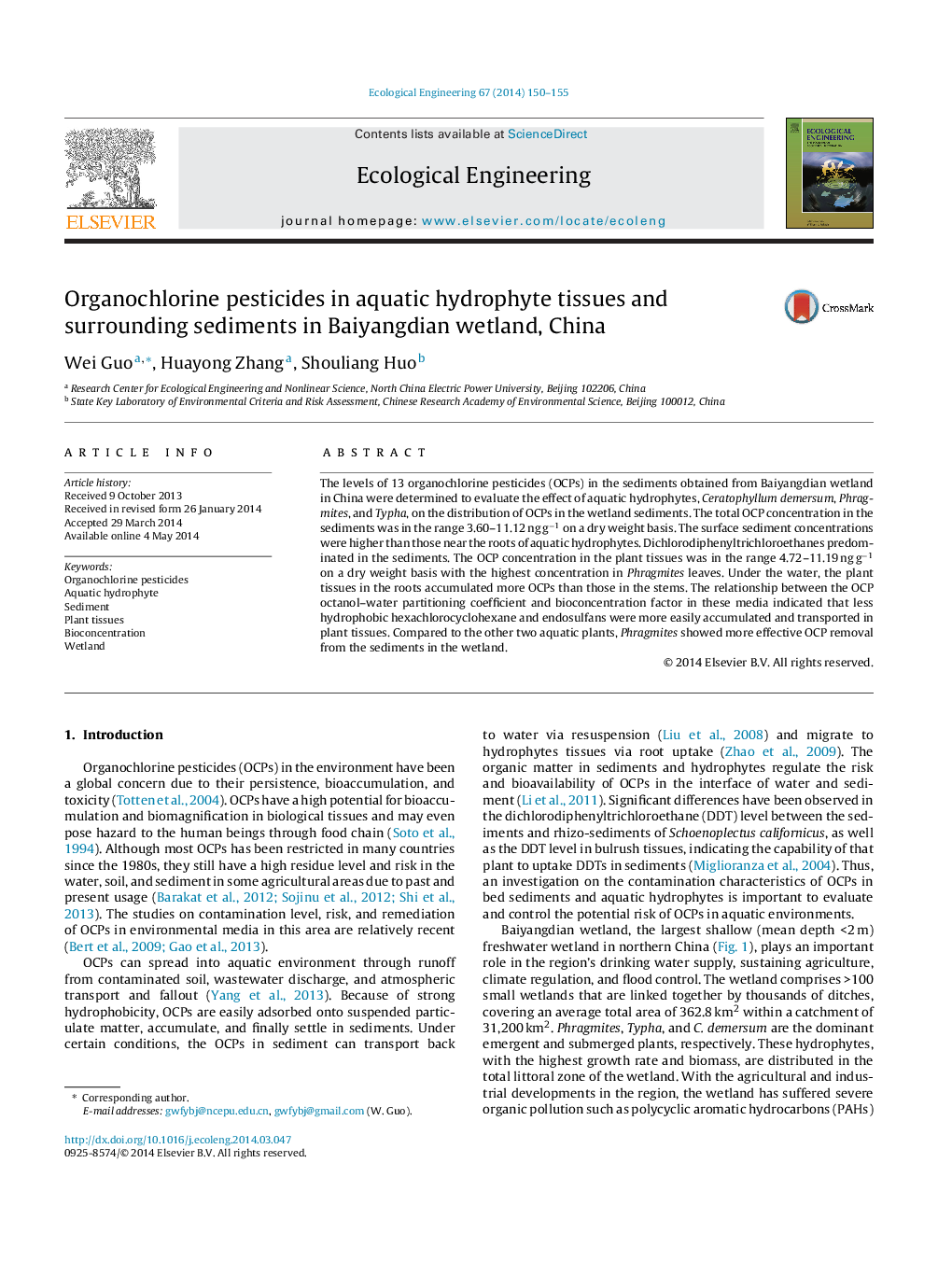| Article ID | Journal | Published Year | Pages | File Type |
|---|---|---|---|---|
| 4389425 | Ecological Engineering | 2014 | 6 Pages |
Abstract
The levels of 13 organochlorine pesticides (OCPs) in the sediments obtained from Baiyangdian wetland in China were determined to evaluate the effect of aquatic hydrophytes, Ceratophyllum demersum, Phragmites, and Typha, on the distribution of OCPs in the wetland sediments. The total OCP concentration in the sediments was in the range 3.60-11.12 ng gâ1 on a dry weight basis. The surface sediment concentrations were higher than those near the roots of aquatic hydrophytes. Dichlorodiphenyltrichloroethanes predominated in the sediments. The OCP concentration in the plant tissues was in the range 4.72-11.19 ng gâ1 on a dry weight basis with the highest concentration in Phragmites leaves. Under the water, the plant tissues in the roots accumulated more OCPs than those in the stems. The relationship between the OCP octanol-water partitioning coefficient and bioconcentration factor in these media indicated that less hydrophobic hexachlorocyclohexane and endosulfans were more easily accumulated and transported in plant tissues. Compared to the other two aquatic plants, Phragmites showed more effective OCP removal from the sediments in the wetland.
Related Topics
Life Sciences
Agricultural and Biological Sciences
Ecology, Evolution, Behavior and Systematics
Authors
Wei Guo, Huayong Zhang, Shouliang Huo,
